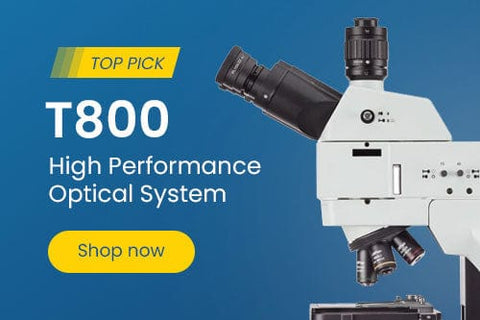- Microscopes
- Cameras
- Lab Supplies & Equipment
- Shop By Brand
- Lab Supplies by Category
- Analyzer Consumables
- Balances
- Bags
- Beakers
- Bench Scale Bases
- Bottles
- Bottletop Burettes
- Bottletop Dispensers
- Boxes
- Blank Microscope Slides & Cover Slips
- Blood Collection
- Caps
- Carboys
- Centrifuges
- Centrifuge Tubes
- Cold Storage
- Containers
- Cryogenic Vials
- Culture Tubes
- Cylinders
- Dispensers
- Digital Dry-Baths
- ESR Products
- False Bottom Tubes
- Flat Bottom
- Funnels
- Gel Documentation
- Glassware
- Glass Test Tubes
- Histology
- Homogenizers
- Hotplates-Stirrers
- Inoculation Loops and Spreaders
- Liquid Handling Products
- Manual-Electronic Pipettors-Pipettes
- Microscope Slides
- Overhead Stirrers
- Pipette Controller (Serological Filller)
- Pipette Tips
- Plastic Test Tubes
- PCR Tubes, Strips & Plates
- Racks
- Repeater Pipettor
- Rockers
- Rotary Evaporators
- Serological Pipettes
- Shakers
- Spectrophotometers
- Syringe Tips
- Sample Tubes
- School/Classroom Supplies
- Screwcap Test Tubes
- Self-Standing
- Test Tube Racks
- Test Tubes & Vials
- Transport & Storage Tubes
- Thermal Mixers
- Transfer Pipets
- Urinalysis
- Vacuum Pumps
- Weighing Dishes
- Lab Equipment
- Balances
- Bench Scale Bases
- Centrifuges
- Digital Dry-Baths
- Gel Documentation
- Homogenizers
- Hotplates-Stirrers
- Overhead Stirrers
- Pipettors
- Rockers
- Rotary Evaporators
- Shakers
- Serological Pipettes
- Spectrophotometers
- Thermal Mixers
- Vacuum Pumps
- Liquid Handling Products
- Manual-Electronic Pipettors-Pipettes
- Pipette Tips
- Racks
- Pipette Fillers-Controllers
- Repeater Pipettor
- Syringe Tips

Cost effective products and solutions designed to improve laboratory efficiency, safety and results.
SHOP BENCHMARK SCIENTIFIC >
- Slides & Accessories
- Slides
- Cameras
- Illuminators
- Adapters
- Eyepieces / Objectives
- Bulbs
- Magnifying Lamps
- Monitors and Tablets
- View All Categories
- Adapters
- DSLR Adapters
- USB Camera Adapters
- Ring Light Adapters
- Power Adapters
- Barlow Lens
- Books & Experiments Cards
- Bags & Cases
- Bags
- Cases
- Cameras
- Circuit Board Holders
- Cleaning Kits
- Condensers
- Darkfield
- Phase Contrast Kits
- Polarizing Kits
- Dust Covers
- Eye-Guards
- Eyepieces
- 20mm
- 23mm
- 30mm
- 30.5mm
- Filters
- Microscope Filters
- Illuminator Filters
- Fluorescence Kits
- Conversion Kits
- Filter Cubes
- Focusing Racks
- Fuses
- Illuminators
- Bulbs
- LED Illuminators
- Fiber Optic Illuminators
- Fluorescent Illuminators
- Ring Lights
- Stand Lights
- Goosenecks
- Gooseneck Attachments
- Immersion Oils
- Loupes
- Magnifying Lamps
- Clamp Lamps
- Desktop Lamps
- Rolling Stand Lamps
- Mechanical Stages
- Monitors and Tablets
- Calibration Slides & Stage Micrometers
- Stage Warmers
- Stain Kits
- Stands
- Articulating Arm Stands
- Boom Stands
- Table Stands
- Tweezers
- Other Accessories
- Shop By Industry
- Shop By Industry
- Botany
- Agronomy & Forestry
- Horticulture
- Phytopathology
- Chemistry
- Biochemistry
- Biotechnology
- Cannabis
- Pharmaceutics
- Consumables
- Beer & Wine
- Cosmetics
- Food & Beverage
- Electronics
- Circuit Boards & General Electronics
- Mobile Phone Repair
- Semiconductors & Wafers
- Environmental
- Asbestos
- Ecosystem Research
- Mud Logging
- Soil Treatment
- Water Treatment
- Forensics
- Ballistics
- Fingerprint Analysis
- Genetic Identification
- Hair & Fiber Analysis
- Handwriting Analysis
- Industrial
- Aerospace
- Automotive
- Dental Lab & Production
- Glass Industry
- Industrial Inspection
- Mechanical Parts
- Paper Industry
- Petrochemical
- Plastics
- Printing Industry
- Quality Assurance & Failure Analysis
- Textiles & Fibers
- Tool Making
- Wood Production
- Jewelry & Gemology
- Engraving
- Gemology
- Jewelry Repair
- Stone Setting
- Watch Repair
- Hobby
- Coins & Collecting
- Stamps
- Modeling & Assembly
- Sculpting
- Repair
- Telescopes
- Metallurgy
- Archaeology
- Geology
- Mining
- Petrology
- Medical & Microbiology
- Anatomopathology
- Bacteriology
- Biochemistry
- Cell Culture
- Cytology
- Dental Microbiology
- Dermatology
- Dissection
- Gout & Rheumatology
- Hair & Fiber Analysis
- Hair Transplant
- Fluorescence
- Hematology & Live Blood Analysis
- Histopathology
- Mycology
- Medical Devices
- Microsurgery
- Neuropathology
- Oncology
- Parasitology
- Pathology
- Semen Analysis
- Virology
- Veterinary & Zoology
- Breeding & Semen Analysis
- Entomology
- Fecal Smears & Floats
- Marine Biology
- Ornithology
- Veterinary Medicine
- Zoology
- Shop By Industry
- Students
- Telescopes
- Buy With Prime
- Sale
- Compound Microscopes
- Shop By Brand
- AmScope
- Euromex
- Omax
- Shop by Head Type
- Binocular
- Monocular
- Trinocular
- Multi-head & Training
- Shop By Specialty
- Brightfield
- Darkfield
- Phase Contrast
- Inverted
- EPIfluorescence
- Polarizing
- Digital Integrated
- Metallurgical
- Shop By Application
- Education
- Research
- Veterinary
- Compound With Digital Head
- Shop Best Sellers
- Shop All Compound
- Stereo Microscopes
- Shop By Brand
- AmScope
- Euromex
- Shop By Objective Type
- Fixed Power
- Zoom Power
- Single Lens
- Common Main Objective
- Shop By Stand Type
- Articulating Arms
- Boom Stands
- Gooseneck Stands
- Table Stands
- Other Stands
- Shop By Head Type
- Binocular
- Monocular
- Trinocular
- Simul-Focal
- Shop By Industry
- Video Inspection
- Industrial Inspection
- Microscope Heads
- Shop Stands
- Articulating Arm
- Boom Stands
- Table Stands
- Stereo With Digital Head
- Shop Best Sellers
- Shop All Stereo
- Specialized Microscopes
- Digital Microscopes
- Kids, Student Microscopes
| Amscope Team
What Can You See With a 2500x Microscope?

Microscopes provide fascinating close-up views of the unseen world around us. Most compound microscopes use a combination of objective lenses and magnifying eyepieces to provide magnifications up to 1000x. At this magnification, you can inspect small specimens like algae, bacteria, plant cells, and protozoa.
Some high-powered compound microscopes have multiple optical lens eyepieces and optional lenses that provide additional levels of magnification up to 2500x. Electron microscopes can provide even higher levels of magnification of 200,000x or more. Generally, compound microscopes are much more affordable than electron microscopes, making them more obtainable for the average hobbyists and professionals.
What can you see with a 2500x microscope? While you can view many samples with a basic 40x-1000x microscope, a 2500x instrument will allow you to see these objects in impressive detail. The 2500x microscope will also enable you to study some tiny samples that you can’t view at a weaker magnification.
4 Incredible Uses of a 2500x Microscope
A 2500x microscope with high-quality lenses provides stunning close-up views of many organic and nonorganic samples. Clinicians, hobbyists, and students can benefit from adding this piece of equipment to their toolkits.
Studying Virus Infections, Bacteria, and Collections From Clinical Examinations
Clinicians and health care providers can use a 2500x microscope to examine bacteria, virus infections, and other samples taken during patient examinations. For example, physicians and laboratory technicians can analyze throat swabs and urine samples under a microscope. The instrument helps detect and diagnose serious health problems like pneumonia and urinary tract infections.
While you can observe some bacteria and viruses using a lower-powered microscope, the higher-powered tool allows for a more nuanced inspection.
Samples that clinicians can examine at a 2500x magnification include:
- Amniotic fluid neutrophils
- Methicillin-resistant Staphylococcus aureus (MRSA)
- Salmonella
- Streptococcus
- Wound debris like biofilms and necrotic crusts
- Yeast cells
Researching Blood and Cancer Cells
A high-powered microscope allows researchers to study blood and cancer cells. Using a 2500x microscope, scientists can diagnose and research blood disorders, cancers, and other potentially deadly diseases.
For example, you can observe mitotic activity using a magnification of 400x or higher. Using these microscopic images, you can count mitoses to assess the rate of cell proliferation. This measurement is used to detect and grade cancerous tumors.
Examining Plant Specimen Samples
Plants are ideal subjects for microscopy because you can easily collect a variety of samples from the world around you. You can view many plants and their cellular structures with a basic 100x magnification, but higher levels of magnification will allow you to take a much closer look.
For instance, you can use a 2500x microscope to view plant specimens like:
- Flower petals
- Pollen
- Root structures
- Seagrass
If you want to start or expand your sample collection, AmScope provides prepared microscope slides with animal, insect, and plant specimens.
Viewing Close-Up Details of Insects and Microbes
You can also closely examine insects and microbes with the help of a 2500x microscope. Whether you’re a professional entomologist or just an insect-loving hobbyist, you can enjoy intricate views of these tiny creatures.
For example, you can see nematodes, or roundworms, with a 100x magnification. However, a higher-powered microscope will allow you to see species-specific characteristics, such as reproductive structures.
Other interesting insects and microbes that you can study with a 2500x microscope include:
- Algae
- Mold
- Mushroom spores
- Probiotics in yogurt
- Wasps
- Water beetles
Who Might a 2500x Microscope Be Most Useful For?
A 2500x microscope has a variety of applications, making it a useful tool in many settings. You can also pair the instrument with a microscope camera that provides digital imaging, expanding the range of possible uses.
Users who may benefit from a high-powered 2500x microscope include:
- Clinicians who need to examine bodily fluid samples for bacterial infections, viruses, and other diseases
- Educators in schools and colleges who teach botany, microbiology, and related subjects
- Forensic experts who need to capture ideal images of microscopic evidence to display in court during criminal prosecutions
- Students who need affordable but powerful microscopes for classes and research
- Researchers studying cancer cells and other samples
If you’re not sure if a 2500x microscope is right for you, get in touch with AmScope today. Our friendly representatives can help you find the best fit for your situation.
The Different Types of Microscopes That Have a 2500x Magnification Level
There are two main types of microscopes that provide 2500x magnification: compound and electron microscopes. These tools are used in different settings and have varying price points.
As the name suggests, compound microscopes use a combination of eyepieces to magnify small objects for the human eye. The optical lens placed closest to the sample is known as the objective. Most compound microscopes feature a series of rotating objective lenses of varying strengths, such as 10x and 40x. The objective lens relays the image to the eyepiece, which provides additional magnification.
Most compound microscopes only have a single eyepiece with 10x magnification. However, more sophisticated microscopes feature additional eyepieces for more detailed observation. For instance, the 40x-2500x LED Binocular Compound Microscope includes a 25x eyepiece that you can use with the 100x objective to produce a magnification of 2500x. By adjusting the combination of eyepieces, you can view a range of images.
While compound microscopes use light and mirrors to magnify objects, electron microscopes use shorter-waved electrons. As a result, they can produce sharper images of up to 200,000x magnification. However, electron microscopes are usually much more expensive than compound instruments, costing tens or even hundreds of thousands of dollars.
Determining the Magnification Range That's Right for You
To determine what magnification range you need, you should consider:
- The level of detail that you want to observe
- The size and type of samples that you will observe most frequently
- The purpose of your microscope usage
If you only need a microscope for a hobby or for schoolwork, a simple 40x-1000x compound microscope may be the perfect tool. However, a 2500x microscope can be a smart investment for users who want to capture impressive images or who need to observe very small samples in clinical or research settings.
Are You Ready To Go From Hobbyist to Seasoned Professional With a Quality Microscope?
If you’re ready to view the world through a sharper lens, visit AmScope today to find your perfect 2500x microscope. We offer a variety of quality and affordable microscopes to fit every budget and situation. And with our impressive five-year factory warranty, you can feel confident you’re purchasing a durable instrument you can rely on for years.Free Shipping on orders $149+
Same day shipping for orders within the contiguous U.S.
Easy Returns
Hassle-free 30-day return policy. 100% satisfaction guarantee.
Quality Products
5-year warranty on AmScope microscopes.
Got a question?
Speak to our team of experts and find the products you need.
















